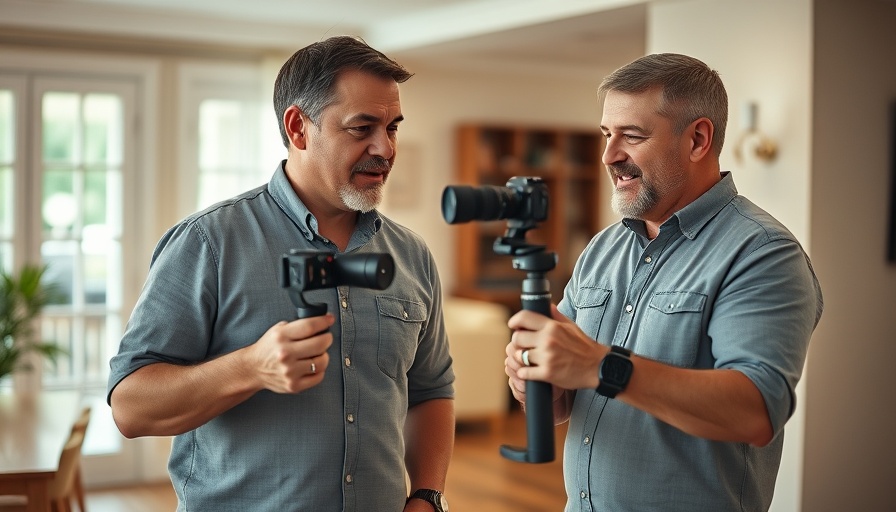
The Future of Real Estate Photography: Embracing AI Technologies
In recent years, the world of real estate photography has undergone significant transformations, largely driven by technological advancements. One tool that stands out in this evolution is Auto HDR, an AI-driven platform that promises to revolutionize the way real estate agents and photographers edit their images. In this article, we explore the potential of Auto HDR and its implications for real estate professionals navigating a competitive market.
In 'This Tool Made Editing Real Estate Photos Pointless! Auto HDR?', the video delves into the intricacies of AI-driven photo editing, prompting us to explore its game-changing impact on real estate photography.
Why Traditional Editing Methods Are Becoming Obsolete
For seasoned real estate agents and budding photographers alike, traditional editing methods can often feel cumbersome and time-consuming. Many have found themselves frustrated with the endless tutorials and lengthy editing processes that seem to yield subpar results. The rise of AI-driven editing platforms like Auto HDR addresses these headaches by automating the process, significantly reducing the time it takes to achieve polished, professional images. Not only does Auto HDR make real estate photos look striking, but it also allows users to complete their editing within minutes—turning around images that traditionally would take hours.
Real Benefits of Auto HDR for Real Estate Professionals
One of the most compelling advantages of Auto HDR is its efficiency. Users report it takes a mere 30 to 40 minutes for the software to process up to 35 images after they are uploaded. This rapid turnaround means that agents can deliver listing photos to clients faster than ever, providing a competitive edge in the fast-paced real estate market.
Add to that the platform's affordability—users can sign up for packages that range from as little as $28 for 50 images to more extensive plans that can accommodate up to 5,000 images per month—all at a lower per-image cost compared to human editors. This makes Auto HDR not only an efficient method but also a cost-effective solution for agencies looking to streamline their workflows.
The Pros and Cons of AI Editing
Despite its many advantages, relying solely on AI for photo editing does raise some questions. For instance, while AI editing like that offered by Auto HDR is speedier, it can occasionally produce inconsistent results. As highlighted in discussions around this platform, there are instances where subtle differences in editing quality may arise, especially in challenging lighting conditions. This limitation contrasts with the personalized service a human editor can provide.
However, this doesn't negate the effectiveness of Auto HDR. Many users tout the capability of the software to handle colors and tones much more reliably than traditional editors; they appreciate its ability to produce natural-looking twilight photos, a notoriously tricky aspect of real estate photography.
How to Transition to AI-Based Editing Smoothly
For photographers and agents eager to adopt AI editing, starting with Auto HDR can be remarkably straightforward. Users keen to test the waters can begin with the 10 free images offered during account setup. This 'try before you buy' method allows potential users to gauge how well the software meets their needs without a hefty initial investment.
While existing practices may involve outsourcing photo editing to overseas editors—which has its pros and cons in terms of cost, control, and speed—incorporating AI tools can enhance the overall efficiency of one’s workflow. To maximize the benefits of AI technologies, agents are encouraged to consider a hybrid approach: utilizing AI for standard editing while reserving complex edits for professional human editors when necessary.
Conclusion: Embracing Change for Better Results
As the demands of the real estate market continue to grow, leveraging tools like Auto HDR can provide agents and photographers with the speed and efficiency needed to stay competitive. Whether through quickly edited photos or refined twilight images, this AI-driven platform is paving the way for a new era in real estate photography. The blend of technical efficiency and stunning quality makes this an exciting time for those in the industry. For anyone serious about maintaining a competitive edge, exploring Auto HDR is a step forward toward embracing the future of real estate photography.
 Add Row
Add Row  Add
Add 




Write A Comment